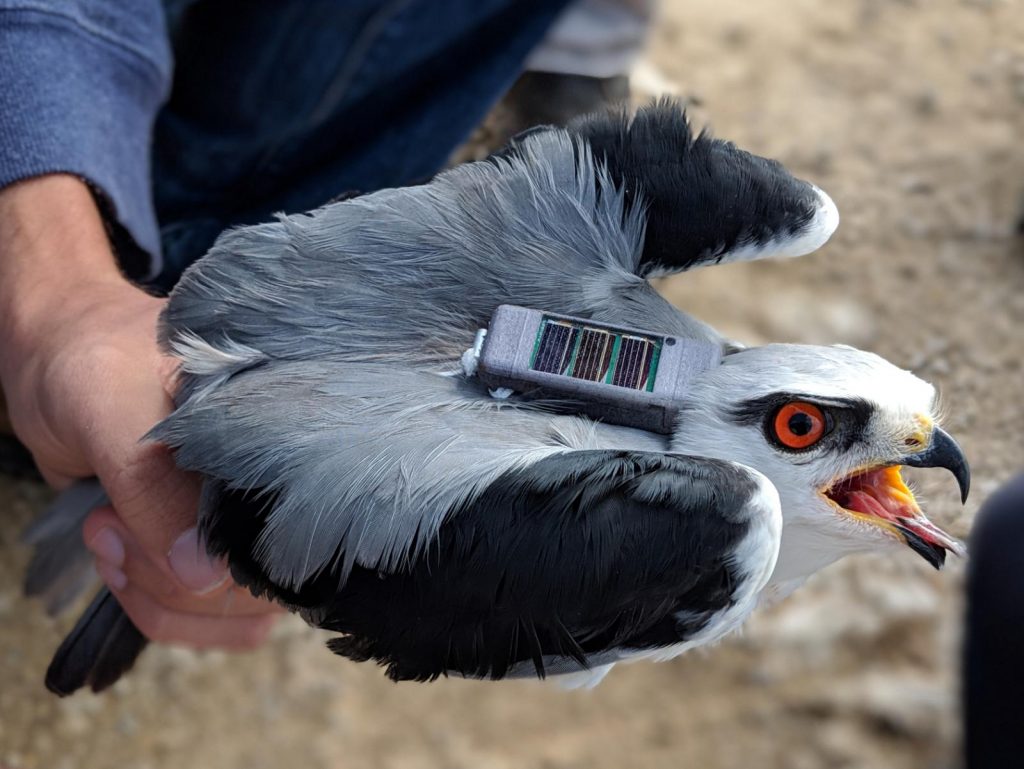
February 17, 2022 — Movement is ubiquitous across the natural world. All organisms move, actively or passively, regularly or during specific life stages, to meet energy, survival, reproductive and social demands. Movement affects a variety of ecological processes and the ability of individuals to cope with human-induced, rapid environmental changes.
Professor Ran Nathan of the Hebrew University of Jerusalem, together with students and colleagues from 12 countries around the world, reviewed a variety of technologies that have been used to gather information on the movements of mammals, birds, fish, and other wildlife in their natural environments. Over the past decade, technological advances transformed the field of movement ecology – the integrated study of organismal movement – from a data-poor to a data-rich discipline. This ongoing big-data revolution is driven by cost-effective and automated wildlife tracking systems that generate massive, high-resolution datasets that match the relevant ecological context in which animals perceive, interact with, and respond to their environment.
In a review published in the prestigious journal Science, Nathan and his colleagues assessed the main tools, insights, challenges, and opportunities of the big-data revolution in movement ecology. Wildlife tracking technologies vary in how they tackle the basic trade-offs between data collection rate, spatial coverage, tracking duration, and the size of tracked animals. Among eight major tracking technologies examined in this study, a technology called “reverse-GPS” stood out in its exceptional capacity to produce big data on animal movement in a cost-effective manner. Other tracking technologies, such as GPS devices, computer vision systems, and radars, can also produce big data, and the researchers recommended viewing all major tracking technologies as complementary rather than competing alternatives.
A new reverse-GPS system called ATLAS was developed by Nathan and Professor Sivan Toledo of Tel Aviv University and their teams, under the auspices of the Minerva Center for Movement Ecology. It proved unparalleled in creating a rich database of wild animal movement by simultaneously tracking many dozens of wild animals with great accuracy (a few meters) at a high resolution (every second) and over a relatively long time period (months) using small, inexpensive radio tags attached to the animal. The system has been installed in Israel, the UK, the Netherlands, Germany, and elsewhere around the world, allowing researchers to tackle basic movement ecology questions that were out of reach until today. “This sophisticated tracking system has ushered in a range of exciting discoveries and novel insights, including the first evidence for the existence of a cognitive map in a wild animal (a fruit bat), a pioneering study linking variation among individual birds (pheasants) in their cognitive ability and space-use patterns, and a discovery of a notable spatial segregation in foraging areas among bats that roost in two adjacent colonies, owing to an individual’s memory and information transfer among bats, with surprisingly no evidence for competition as a driving force,” Nathan shared.

Another reverse-GPS system known as “acoustic telemetry” uses acoustic tags to track fish and other aquatic animals underwater. Various systems of this kind were installed in rivers, lakes, and seas around the world, yielding new scientific insights and important guidelines for dealing with human-inflicted risks for wildlife. For example, by using an acoustic tracking system in European rivers, researchers found that downstream-migrating eels–a critically endangered species — and Atlantic salmons change their behavior upon encountering dams, likely increasing their energy expenditure and mortality risk.
Another important tracking technology is GPS, which has been widely used to globally track relatively large animals and can periodically track animals at high resolution to uncover the factors generating variation in animal behavior and to assist biodiversity conservation and ecosystem management. For example, GPS tracking allowed Nathan and his students to reveal that young vultures from the declining population in Israel climb rising-air columns (thermals) much less efficiently than do experienced adult vultures when those thermals are drifted by winds. Elsewhere, GPS tracking of critically endangered California condors can provide early alerts to avoid collision with wind turbines in the area, while GPS tracking of albatrosses can help locate illegal fishing vessels across vast oceans.
In another example too recent to be included in the review, GPS tracking provided unique information about the avian flu epidemic that led to the death of thousands of cranes in Israel earlier during this winter. “At the first sign of death among a few dozen cranes, a much greater proportion of our GPS-tagged cranes died or were suspected to be infected given the sudden reduction in their movement and activity. We informed the authorities that a drastic mortality event is coming, as unfortunately did happen, and that urgent measures should be taken,” Nathan explained. Later, the team was able to trace the fate of infected birds and found that some had eventually recovered. “We now closely watch the data from cranes that winter in Africa to monitor the possible second wave of the outbreak when millions of migrating birds will soon arrive,” Nathan emphasized.
Movement ecology is rapidly expanding scientific frontiers, providing improved opportunities for conservation and insights into wild animal movements through large interdisciplinary and collaborative frameworks. “This is also the story of our research,” Nathan explained, referencing a Fish Telemetry workshop in the Czech Republic organized by Professor Ivan Jarić in 2018 that he was invited to attend. “I met a group of excellent researchers with backgrounds, expertise, and research subjects quite different from mine. I remember the exact moment that gave birth to our joint project when I shared my vision for a big-data revolution in movement ecology. Preparing our review together has been a wonderful experience; working together across disciplines is certainly the way to go,” Nathan concluded.
###
CITATION: Big data approaches lead to an increased understanding of the ecology of animal movement. R. Nathan et al., Science 375, eabg1780 (2022). DOI: 10.1126/science.abg1780
FUNDING: Minerva Center for Movement Ecology, Minerva Foundation, Israel Science Foundation, Israel Ministry of Science and Technology, Jewish National Fund, Bi-national USA-Israel Science Foundation, German-Israeli Foundation, and Adelina and Massimo Della Pergola Chair of Life Sciences. Further support included the “Multi-Lake Research of Fish Ecology and Management using High-Resolution 3D Telemetry Systems” project funded by ALTER-Net within the Multi Site Research initiative.




